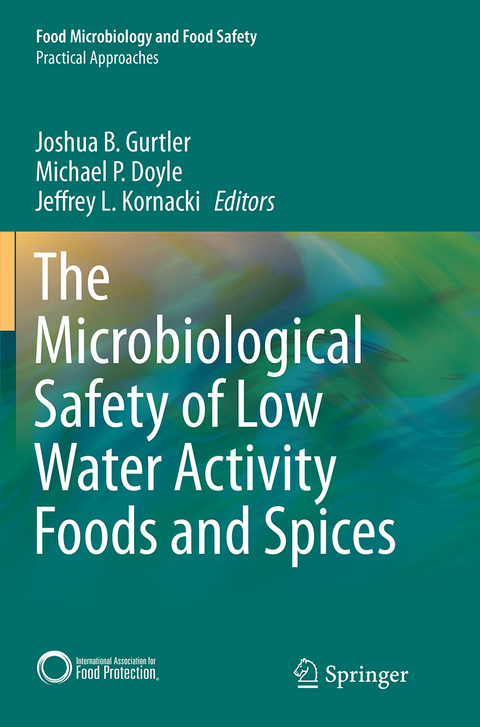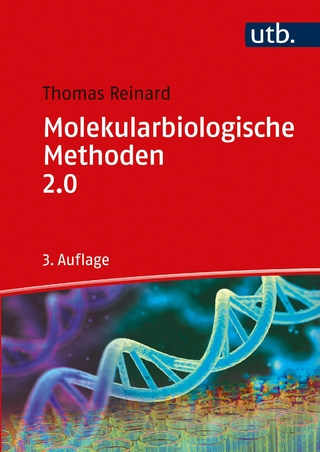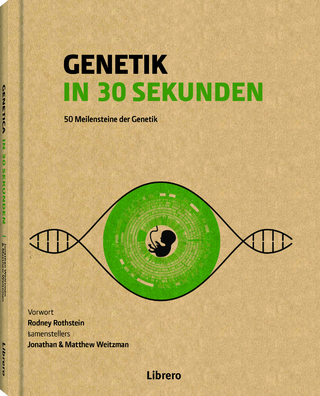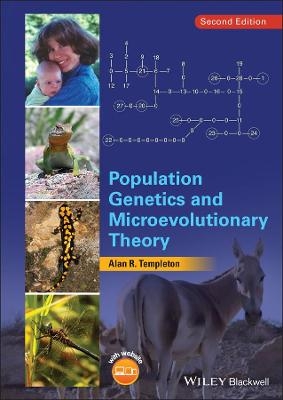
The Microbiological Safety of Low Water Activity Foods and Spices
Springer-Verlag New York Inc.
978-1-4939-5271-7 (ISBN)
This book provides an understanding of the microbial challenges to the safety of low aw foods, and a historic backdrop to the paradigm shift now highlighting low aw foods as vehicles for foodborne pathogens. Up-to-date facts and figures of foodborne illness outbreaks and product recalls are included. Special attention is given to the uncanny ability of Salmonella to persist under dry conditions in food processing plants and foods. A section is dedicated specifically to processing plant investigations, providing practical approaches to determining sources of persistent bacterial strains in the industrial food processing environment. Readers are guided throughdry cleaning, wet cleaning and alternatives to processing plant hygiene and sanitation. Separate chapters are devoted to low aw food commodities of interest including spices, dried dairy-based products, low aw meat products, dried ready-to-eat cereal products, powdered infant formula, nuts and nut pastes, flours and meals, chocolate and confectionary, dried teas and herbs, and pet foods. The book provides regulatory testing guidelines and recommendations as well as guidance through methodological and sampling challenges to testing spices and low aw foods for the presence of foodborne pathogens. Chapters also address decontamination processes for low aw foods, including heat, steam, irradiation, microwave, and alternative energy-based treatments.
Joshua B. Gurtler, USDA Research Scientist, Phoenixville, PA Michael P. Doyle, Regents Professor of Food Microbiology, Director, Center for Food Safety, Department of Food Science and Technology, University of Georgia, Griffin, GA Jeffrey L. Kornacki, President and Senior Technical Director, Kornacki Microbiology Solutions, Inc., Madison, WI
A. Introduction and Overview.- 1. The Microbiological Safety of Spices and Low Water Activity Foods: Correcting Historic Misassumptions.-2. Challenges in the Control of Foodborne Pathogens in Low-Water Activity Foods and Spices.- B. Pathogen Persistence and Control in Low aw Foods and Processing Plants.- 3. Adaptation of Pathogenic Microorganisms to Dry Conditions.- 4. Transcriptomic Responses of Salmonella Species to Desiccation and Low-Moisture Environments: Extending Our Knowledge of How Bacteria Cope with Low-Moisture Stress.- 5. Processing Plant Investigations: Practical Approaches to Determining Sources of Persistent Bacterial Strains in the Industrial Food Processing Environment.- 6. Dry Cleaning, Wet Cleaning and Alternatives to Processing Plant Hygiene and Sanitation.- C. Low aw Food Commodities of Interest.- 7. Spices.- 8. Dried Dairy-Based Products.- 9. Low Water Activity Meat Products.- 10. Dried, Ready-to-Eat Cereal Products.- 11. Powdered Infant Formula.- 12. Nuts and Nut Pastes.- 13. Flour and Meal.- 14. Chocolate and Confectionary.- 15. Salty Snack Foods.- 16. Pet Foods.- 17. Dried Teas and Herbs.- D. Product Testing.- 18. Regulatory Testing Guidelines and Recommendations.- 19. Methodological and Sampling Challenges to Testing Spices and Low aw Foods for the Presence of Foodborne Pathogens.- E. Low aw Food Decontamination.- 20. Irradiation, Microwave and Alternative Energy-Based Treatments for Low Water Activity.- 21. Heat and Steam Treatments.- F. Research Needs.- 22. Research Gaps and Needs Pertaining to Microbial Pathogens in Spices and Low aw Foods.
| Erscheinungsdatum | 14.08.2016 |
|---|---|
| Reihe/Serie | Food Microbiology and Food Safety | Practical Approaches |
| Zusatzinfo | 34 Illustrations, color; 6 Illustrations, black and white; VII, 444 p. 40 illus., 34 illus. in color. |
| Verlagsort | New York |
| Sprache | englisch |
| Maße | 155 x 235 mm |
| Themenwelt | Naturwissenschaften ► Biologie ► Genetik / Molekularbiologie |
| Naturwissenschaften ► Biologie ► Mikrobiologie / Immunologie | |
| Naturwissenschaften ► Chemie | |
| Technik ► Lebensmitteltechnologie | |
| Schlagworte | Desiccated foods • Dried Food • Dry-cleaning • Low water activity foods • Persistent bacterial strains • spices |
| ISBN-10 | 1-4939-5271-4 / 1493952714 |
| ISBN-13 | 978-1-4939-5271-7 / 9781493952717 |
| Zustand | Neuware |
| Haben Sie eine Frage zum Produkt? |
aus dem Bereich


